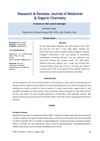Scarring Folliculitis in the Ectrodactyly-Ectodermal Dysplasia-Clefting Syndrome
January 1997
in “
Dermatology
”
TLDR The patient with EEC syndrome had scarring alopecia due to deep folliculitis, possibly linked to abnormal hair structure.
The document discussed a case of a 16-year-old patient with ectrodactyly-ectodermal dysplasia-clefting (EEC) syndrome, who exhibited scarring alopecia due to deep folliculitis. The study found irregular torsion and longitudinal grooving of the hair shaft, known as pili torti et canaliculi, through scanning electron microscopy. Despite normal hair viscosity, the patient had significantly reduced hair elasticity, suggesting an abnormal composition or disordered arrangement of microfibrils in the keratin matrix. Unlike the early-onset erosive scalp dermatitis seen in ankyloblepharon-ED-clefting (AEC) syndrome, the alopecia in this EEC case showed follicular scarring beginning at puberty. The study questioned the role of anatomical hair abnormalities in the development of chronic deep folliculitis in EEC and related syndromes.

